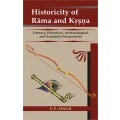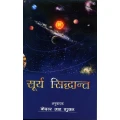Shop by Category

Rasa in Aesthetics: An Application of Rasa Theory to Modern Western Literature (Hardcover)
Sold By:
DK Printworld
₹990.00
Short Description
Dr. Patnaik elucidates the fundamentals of the rasa theory and applies the canons of this theory to various modern Western literary works, Chinese love lyrics and the Japanese haiku poems. Its historical development and recognition are discussed.More Information
| ISBN 13 | 9788124600818 |
| Book Language | English |
| Binding | Hardcover |
| Total Pages | 280 |
| Edition | 3rd |
| Release Year | 2013 |
| Publisher | D.K. Printworld Pvt. Ltd. |
| Author | Priyadarshi Patnaik |
| GAIN | 0M7TH1W0QK3 |
| Category | Performing Arts & Aesthetics Ever Green Shelf Life |
| Weight | 500.00 g |
| Dimension | 14.00 x 22.00 x 1.80 |
Frequently Bought Together

This Item: Rasa in Aesthetics: An Application of Rasa Theory...
₹990.00
Sold by: DK Printworld
Choose items to buy together
ADD TO CART



This Item: Rasa in Aesthetics: An Application of Rasa Theory to Modern Western Literature (Hardcover)
Sold By: DK Printworld
₹990.00
Historicity of Rama and Krsna: Literary, Historical, Archaeological and Scientific Perspectives
Sold By: DK Printworld
₹150.00
Total Price : ₹990.00
Product Details
The Indian tradition of criticism is over two millennia old. And its rasa theory has, from the beginning, essentially influenced authors, connoisseurs and art critics alike. First expounded sometime between the 1st century bc and the fourth century AD in the eminent aesthetician, Bharata’s Natya Shastra, rasa theory deals with the ‘emotive content’ of a work of art — how it is depicted, inferred and transmitted. Dr. Patnaik’s book is a unique effort that demonstrates, with diverse examples, the universality of this ancient theory and its applicability to modern Western classics. Elucidating afresh the concept of rasa and all its nine primary kinds largely on the basis of Natya Shastra of Bharata and the commentaries of the tenth-century aesthetician, Abhinavagupta, the book investigates the validity of rasa theory as an aesthetic, more specifically, a literary theory, and how its canons are applicable to modern Western literature as well as Chinese love lyrics and Japanese haiku poems. Dr. Patnaik’s transcultural exploration, thus, covers all major genres of literature — poetry, drama and fiction; and also major writers — Lawrence, Mayakovsky, Kafka, Camus, Conrad, Hemingway, Faulkner, Marquez, Eliot, Hesse, O’Neill, Ionesco, Beckett, Lorca, Neruda and several others. In emphasizing the universal validity of the rasa theory, the author considers certain modern problems relevant to text, meaning and readers’/audiences’ response as well. Very few are the examples of applied rasa theory even in Sanskrit and other Indian literatures, leave alone its application to Western creative writing. This book, with its bold framework and lucid style, should, therefore, fascinate the scholars of Indology, Indian aesthetics and, above all, comparative literary criticism.














